Jump to Section
What Do Pileated Woodpeckers Eat? (Diet + Behavior)
Last updated: 7 December 2022
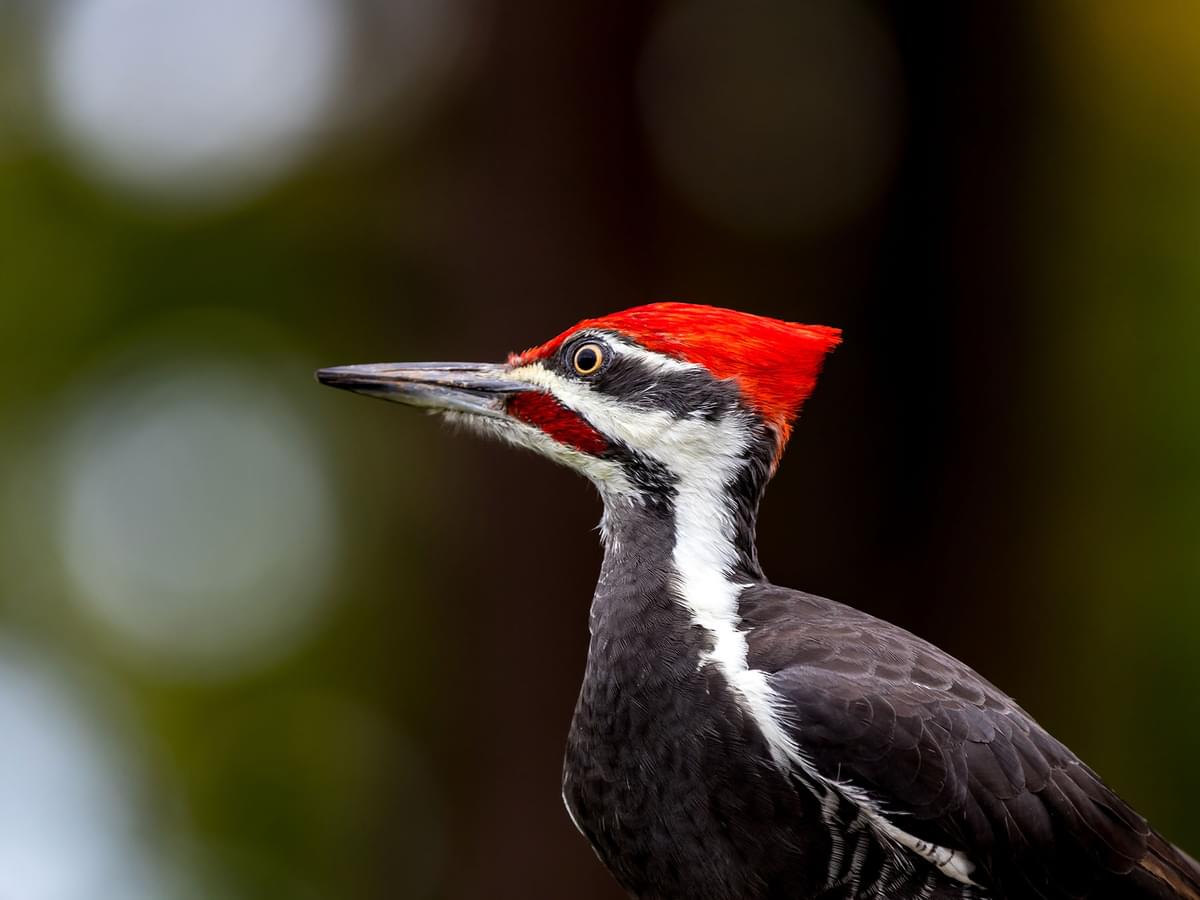
The Pileated Woodpecker (Dryocopus pileatus) is the largest surviving member of the Picidae family in North America. These striking, red-crested birds are resident throughout the eastern half of the USA and in the Northwest, occurring in woodlands, forests, and even well-established backyards in suburbia.
Have you ever wondered what they eat? Or whether they visit bird feeders?
Pileated Woodpeckers feed on insects and other small invertebrates. Beetle larvae and ants are their most important food sources, although they also feed on some wild fruits and berries such as Hackberry and Greenbrier.
Pileated Woodpeckers are perfectly equipped for finding their insect prey hidden deep within decaying wood. They can make short work of fallen logs and rotting tree stumps, which helps to recycle the decaying wood into the soil and breathes life into the forest.
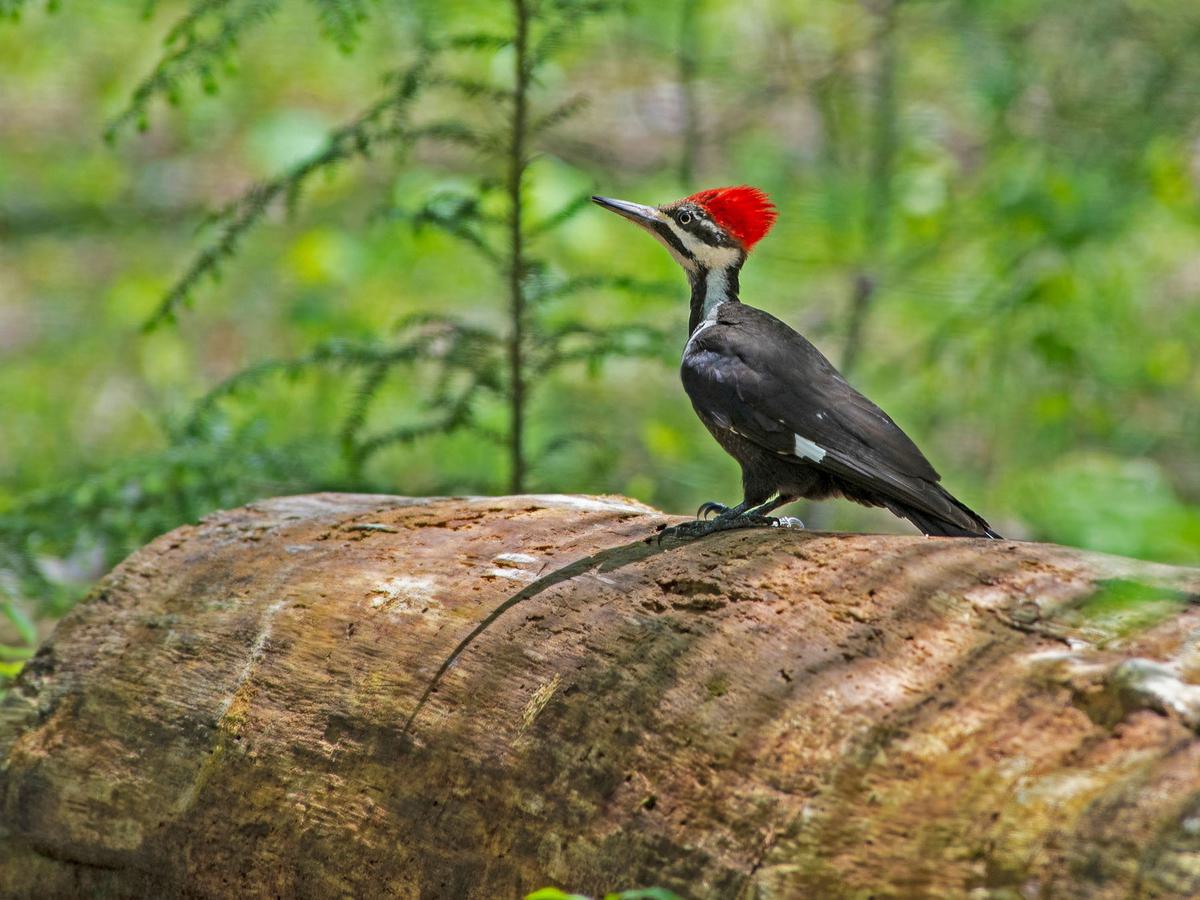
Pileated Woodpecker perched on a log, looking for insects
Their surprisingly small brains can absorb the impact of up to 12,000 blows per day, and they can send their long barbed tongue down into the ants' nest or the grub's tunnel to extract their meal.
Pileated Woodpeckers do visit backyard bird feeders, although they are more of a welcome surprise than the type of bird you can expect in most yards. They are most attracted to suet, although providing a fresh source of water and planting native fruiting plants are also great ways to encourage them.
Read along to learn more about the diet of the Pileated Woodpecker, a great American bird that could be visiting your backyard.
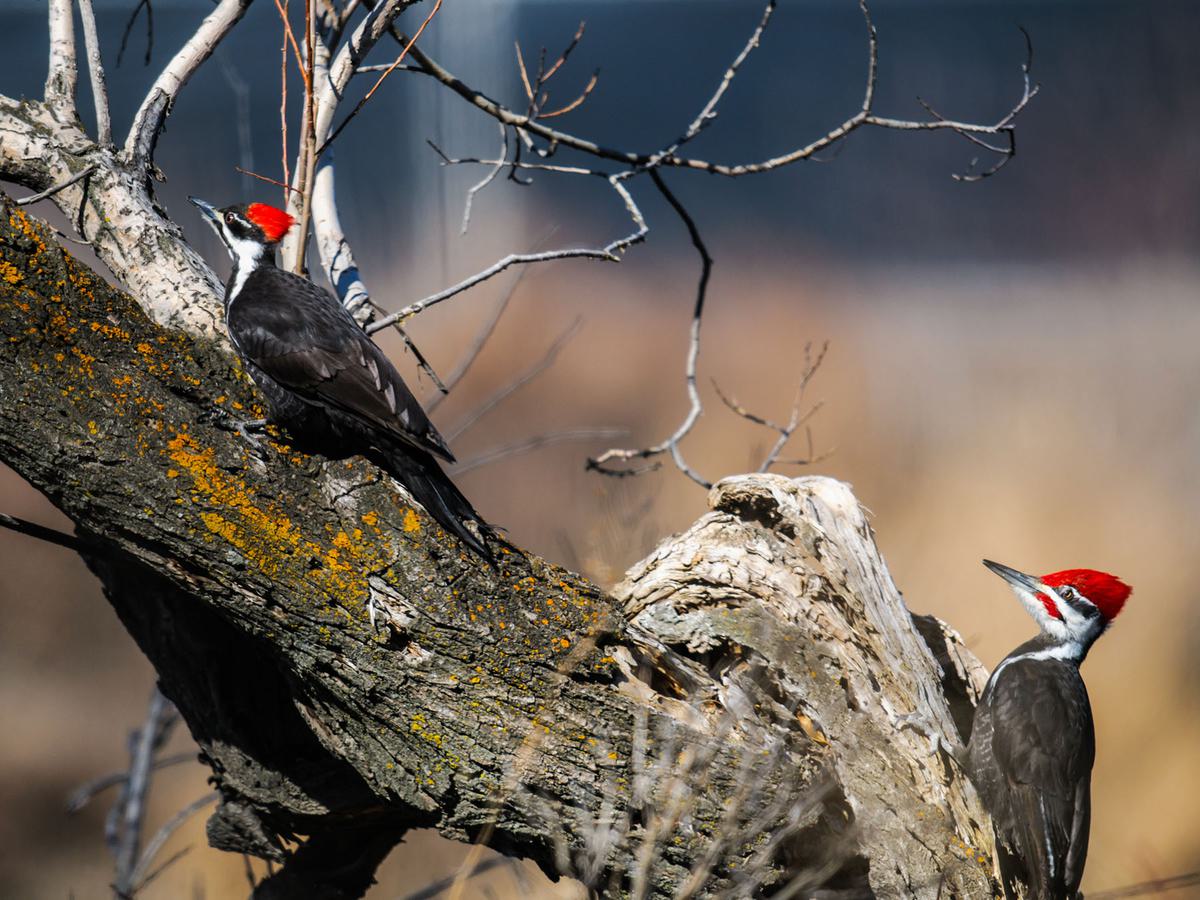
A pair of Pileated Woodpeckers foraging for food in the forest
Diet
Like most birds in their family, Pileated Woodpeckers are perfectly adapted to drilling into wood and harvesting the insects within. They have a varied diet, however, that includes both animal and plant material. Keep reading to find out what’s on their menu.
What are Pileated Woodpeckers' favorite food?
Insects are the most important food source for Pileated Woodpeckers. These birds use their chisel-like bills to seek out beetle grubs and ants in logs and tree trunks, leaving characteristic rectangular holes.
What seeds do Pileated Woodpeckers eat?
Pileated Woodpeckers supplement their diet with seeds. They enjoy the seeds of the Magnolia tree (Magnolia grandiflora), and they are also thought to feed on pine seeds. These large Woodpeckers will also eat mixed bird seed at feeders.
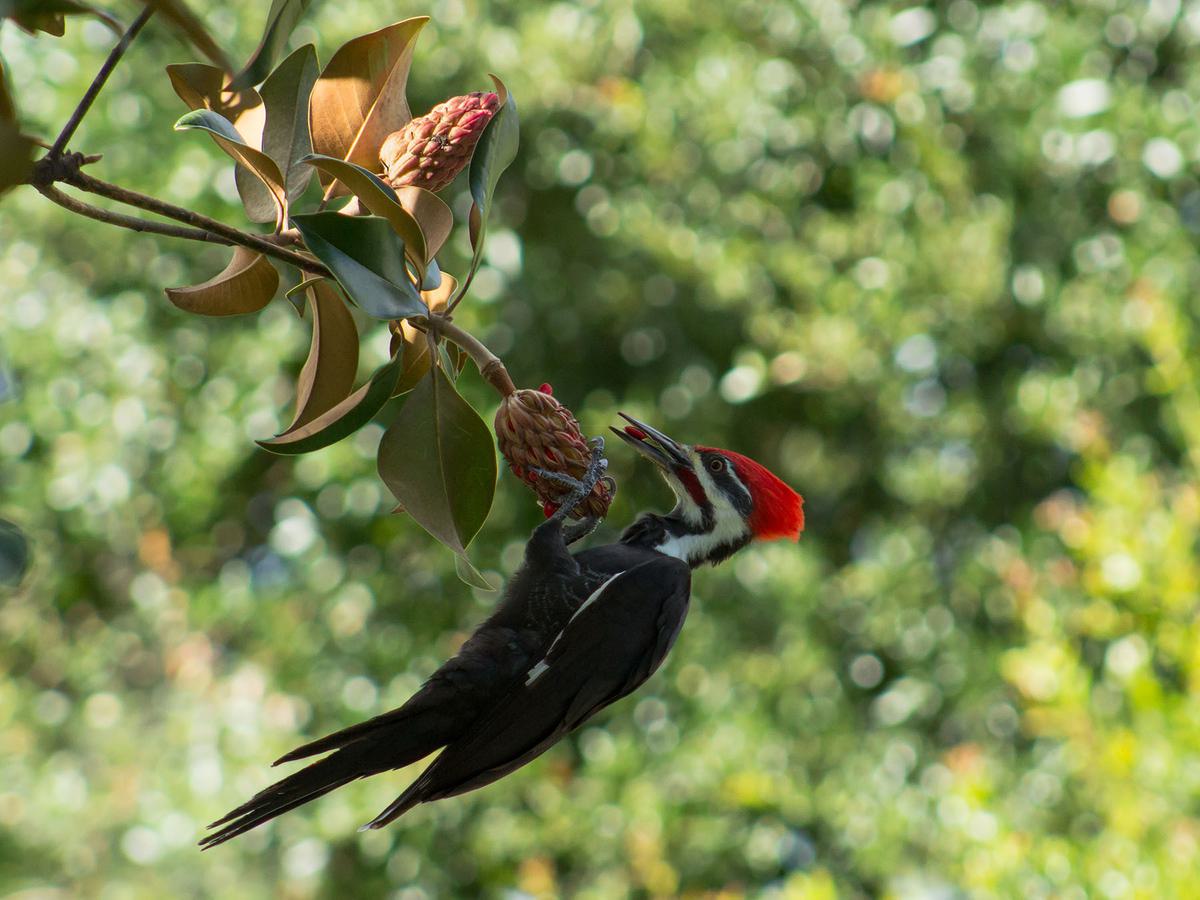
Pileated Woodpecker eating the seeds of the Southern Magnolia tree
What insects do Pileated Woodpeckers eat?
Pileated Woodpeckers catch insects by searching for them within rotten wood. Ants and grubs are the most important food sources, but these birds will also glean insects like caterpillars from branches and foliage.
Pileated Woodpeckers eat the following insects:
- Carpenter Ants (Camponotus spp.)
- Thatching Ants (Formica spp.)
- Woodborer Beetle larvae (Cerambycidae)
- Termites (Archotermopsidae)
- Western Spruce Budworm (Choristoneura occidentalis)
- Paper Wasps (Polites spp.)
What fruit do Pileated Woodpeckers eat?
Up to a third of the Pileated Woodpecker diet consists of wild fruits and berries. They feed from many native plant species, including vines like catbrier and trees like the Hackberry.
Pileated Woodpeckers eat the fruits of the following native and exotic plant species:
- Brier (Smilax spp.)
- Blackberries and Raspberries (Rubus spp.)
- Elderberry (Sambucus canadensis)
- Poison Ivy and Sumac (Rhus spp.)
- Camphor Tree (Cinnamomum camphora)
- Holly (Ilex spp.)
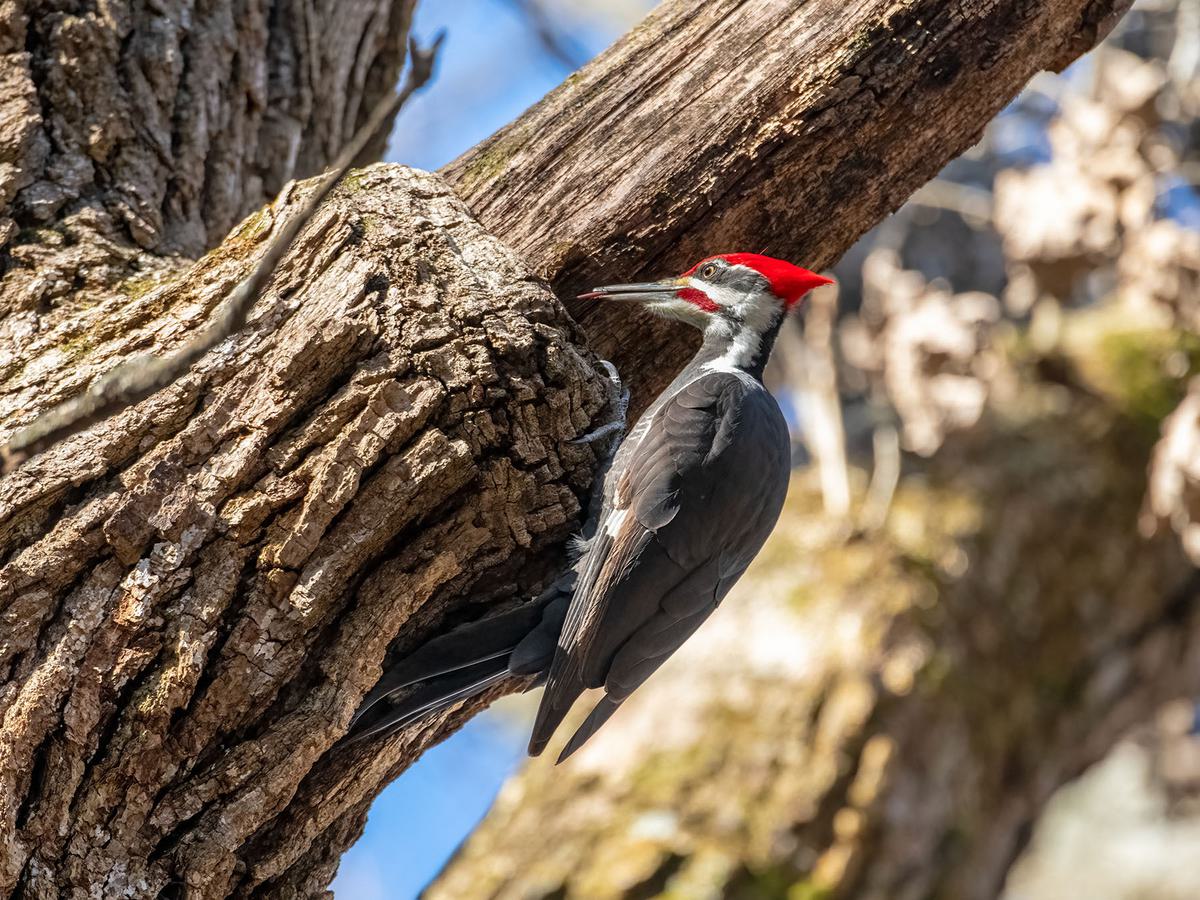
Pileated Woodpecker sticking its tongue out looking for bugs in a big, old oak tree
Foraging and feeding behavior
Pileated Woodpeckers use their strong, sharp beaks to drill into wood to find their food. These hardworking birds are known to drill through small trees to the point where they snap and break in half! That might sound like a bad thing, but it’s all part of the natural ecosystem functioning of a healthy forest.
Continue reading to learn more about how Pileated Woodpeckers feed.
How often do Pileated Woodpeckers eat?
Pileated Woodpeckers eat each day. They can spend over an hour chipping away at a stump or branch as they access more and more of the ant colony inside.
Do Pileated Woodpeckers visit feeders?
Pileated Woodpeckers do visit backyard bird feeders. They prefer large suet feeders, but they will visit most feeder types.
What time of day do Pileated Woodpeckers feed?
Pileated Woodpeckers are diurnal birds that forage during the day. Birdwatchers can find them feeding in the morning, in the afternoon, and before roosting in the evening.
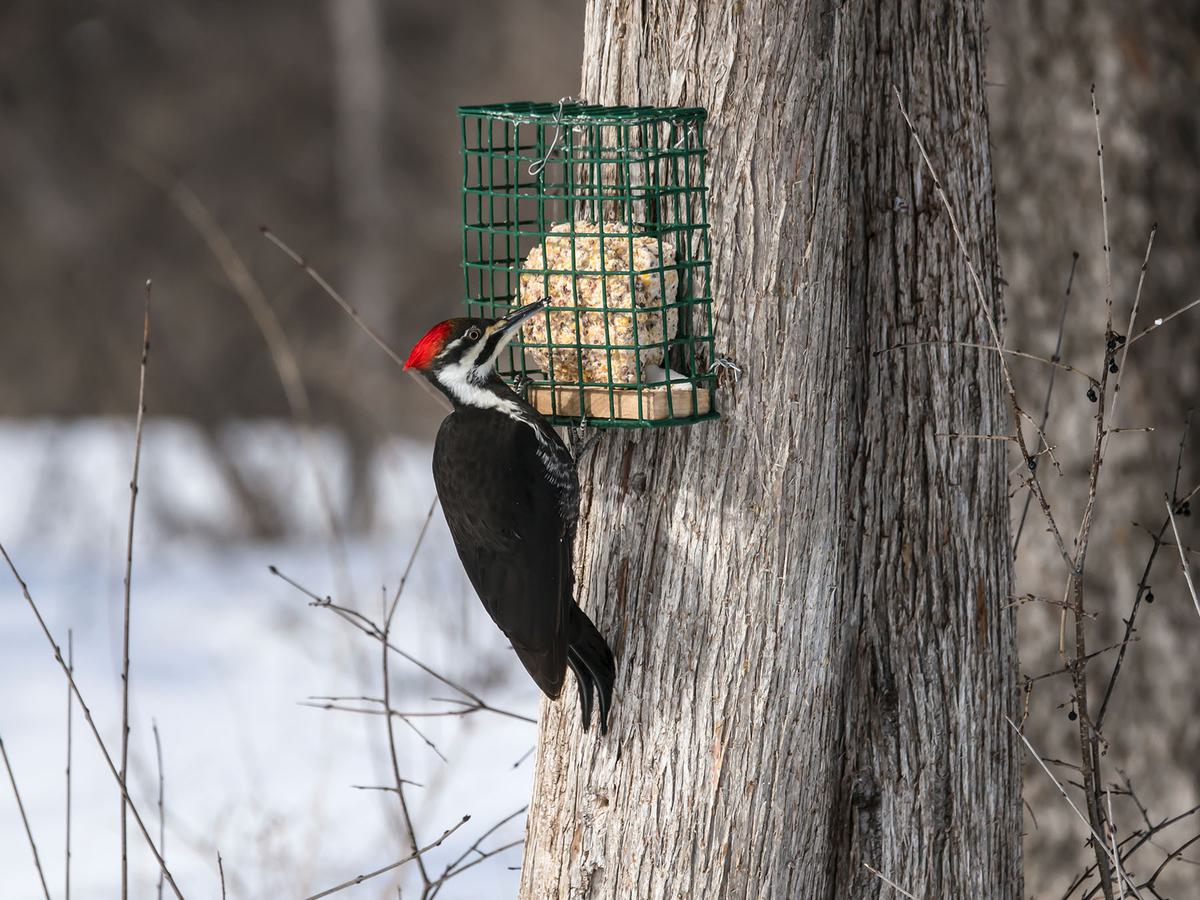
Female Pileated Woodpecker at a bird feeder, eating suet, in the winter
How do Pileated Woodpeckers find food?
Pileated Woodpeckers find most of their insect prey in dead wood like snags, tree stumps, and logs. These birds use their long necks and powerful bills to drill into the wood in search of their food, and it may take over 12,000 strikes to get all the bugs they need.
Pileated Woodpeckers can identify hollow or rotten wood by the sound it makes when they tap. Their sense of hearing helps them find a good place to search for ants and grubs, and they can even hear the prey moving within the wood.
Pileated Woodpeckers also use their keen eyesight to spot other bugs, ripe berries, or backyard bird feeders.
What do Pileated Woodpeckers eat in the winter?
Pileated Woodpeckers show a strong preference for carpenter ants in the winter. The colonies are often located in the summer months and then relied upon heavily during the cold months of winter.
What do Pileated Woodpeckers eat in the summer?
In Canada, Pileated Woodpeckers feed more from stumps and logs in the summer when the ground is clear of snow. Many insects become most active during the summer, so the birds can capitalize on a greater variety of insects at this time.
What do baby Pileated Woodpeckers eat?
Baby Pileated Woodpeckers eat insects directly from their parents’ bills. Both male and female Pileated Woodpeckers feed the hungry, growing chicks as often as 24 times per day.

Pileated Woodpecker feeding chicks inside the nest cavity
Feeding and attracting Pileated Woodpeckers
Pileated Woodpeckers are not the most common backyard birds, although they are often attracted to their favorite food sources. Keep reading to learn how to make these boldly-colored birds more at home around your property.
Is it OK to feed Pileated Woodpeckers?
Feeding wild birds is a great way to observe nature in our backyards if done responsibly. Let’s take a look at some good tips for safely feeding Pileated Woodpeckers:
- Maintain sanitary conditions
- Provide healthy, fresh food
- Position your feeders where they are safe from prowling cats and dogs
What can I feed Pileated Woodpeckers?
Pileated Woodpeckers are most likely to feed on suet at a bird feeder. Suet also attracts many other bird species, including other Woodpeckers. These birds will also take mealworms, sunflower seeds, peanuts, and peanut hearts.
What not to feed Pileated Woodpeckers?
Birders should only provide fresh, healthy foods to the birds in their backyards. Peanut butter, suet, and other soft foods can go rancid in warm weather, so replace them regularly to prevent any possible health issues. It’s also good practice to sanitize and sterilize your birdfeeders and baths regularly to prevent the transmission of parasites and infections.

Suet bird feeders are great for feeding Pileated Woodpeckers
What do Pileated Woodpeckers drink?
Pileated Woodpeckers drink fresh water from ponds and streams. They often go for a drink of water before roosting each night.
How do you attract Pileated Woodpeckers?
The easiest way to attract Pileated Woodpeckers is to provide food and water. You can also encourage these beautiful birds by providing natural foraging grounds. The best way to do this is to plant fruiting plants and leave stumps and snags standing (if it’s safe).
Are Pileated Woodpeckers good to have around?
Pileated Woodpeckers are wonderful birds to have around. Their feeding antics are fascinating to watch, and their unique look makes them captivating subjects for photographers.
These woodpeckers occasionally drill into the timber of our homes, which causes understandable conflict with homeowners. They do this to search for a meal or to excavate a nest cavity, just as they do out in the forest.
If a Pileated Woodpecker is drilling into your home, it might indicate a termite or wood borer problem, and your wood might need to be resealed or replaced.
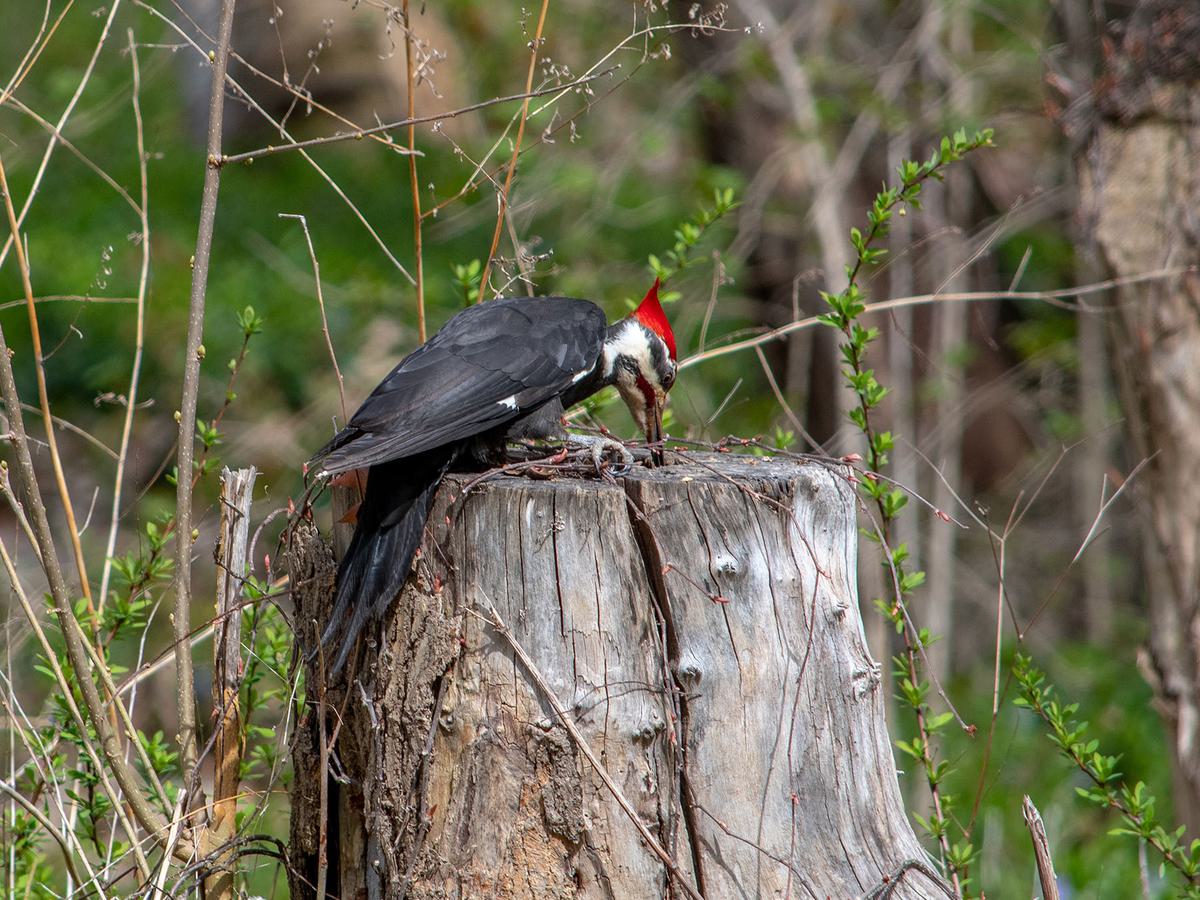
Pileated Woodpecker drilling into a rotten tree, searching for insects
Pileated Woodpecker Diet FAQs
Do Pileated Woodpeckers eat squirrels?
Pileated Woodpeckers do not eat squirrels, although you might spot them ‘arguing’ with one another over a food source.
Do Pileated Woodpeckers like peanut butter?
Pileated Woodpeckers will feed on peanut butter. These birds also enjoy peanut butter suet, peanut butter hearts, and even whole peanuts.
Do Pileated Woodpeckers eat grapes?
Pileated Woodpeckers feed on wild grapes in nature. The Fox Grape (Vitis vulpina) and Frost Grape (V. cordifolia) are both natural food sources.

